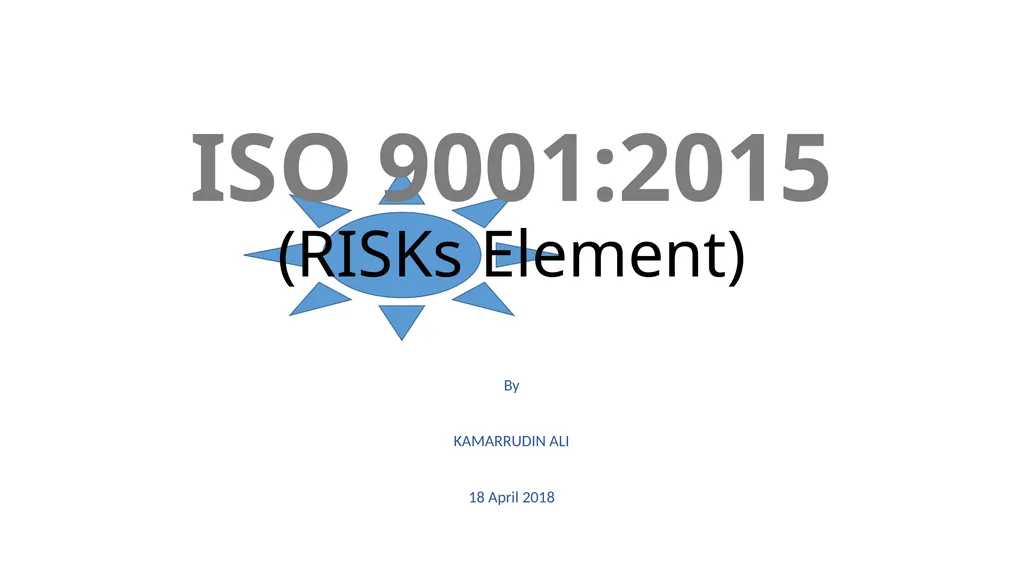
ISO 9001:2015 (RISKs Element) By KAMARRUDIN ALI 18
Author: myesha-ticknor | Published: 2025-05-29
Description: ISO 9001:2015 (RISKs Element) By KAMARRUDIN ALI 18 April 2018 ISO 9001:2015 Risk-based thinking enables an organization to determine the factors that could cause its processes and its quality management system to deviate from the planned
Download Presentation
Download the PPT/PDF: Download
Transcript:
Loading transcript…